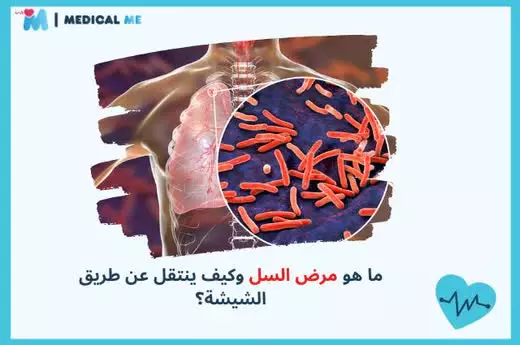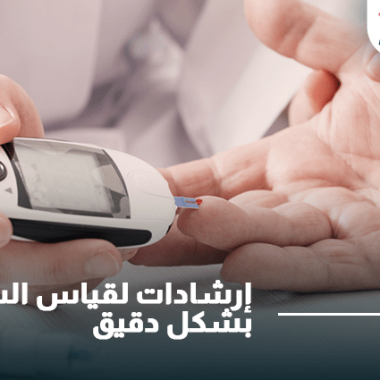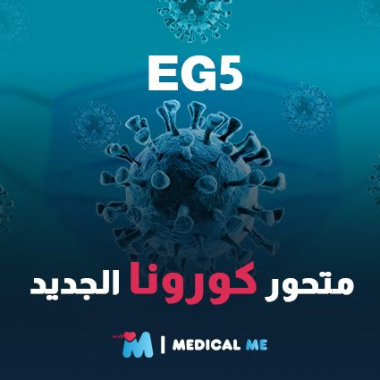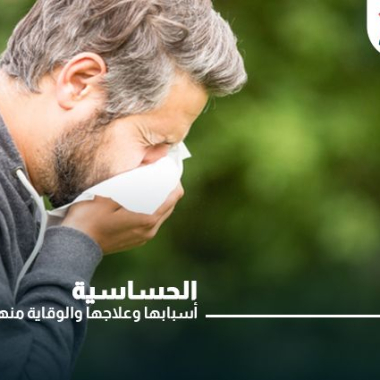مرض السل الرئوي
ما هو مرض السل الرئوي؟
مرض السل الرئوي و يعرف ايضا بأسم الدرن الرئوي هو مرض معدي يسببه نوع من أنواع البكتيريا الخطيرة يسمى مايكوباكتيريام Mycobacterium Tuberculosis تهاجم تلك البكتيريا الرئتين وقد يمتد الأمر إلى أجزاء أخرى من الجسم مثل المخ والحبل الشوكي.
لماذا يُعد مرض السل الرئوي خطير؟
حينما ظهر مرض السل الرئوي في القرن العشرين كان يسبب الوفاة قبل اكتشاف العلاج، ولكن الآن أصبح يمكن علاجه باستخدام أنواع معينة من المضادات الحيوية ولكن يستغرق علاج مرض السل فترة طويلة تتراوح بين 6-9 أشهر.
يوجد نوعين من مرض السل:
1- مرض السل الكامن: أحيانًا يكون الجسم حامل للبكتيريا ولكن الجهاز المناعي للشخص يحول دون انتشاره، وحينها لا يظهر على الشخص أية أعراض، ولكن في ذلك الوقت يكون الشخص مٌعرض لظهور الأعراض في حالة تأثر الجهاز المناعي أو التعرض لأي مرض آخر يُضعف المناعة، ومع ذلك فإن مرض السل الكامن غير معدي.
2- مرض السل النشط: 90% من حالات السل النشطة تنتج عن مرض السل الكامن، وحينها تتكاثر البكتيريا بشكل كبير داخل جسم الإنسان وتصبح الأعراض ظاهرة على المريض ويصبح قادرًا على نقل العدوى.
أسباب مرض السل وأعراض الدرن الرئوى :
بعد التعرف على أسباب مرض السل وأنه مرض بكتيري وليس فيروسي تسببه بكتيريا عصوية تسمى Mycobacterium Tuberculosis، فبالحديث عن أعراض مرض السل الكامن نجد أن ليس له أية أعراض على المريض طالما كان الجهاز المناعي قادرًا على إبقاء البكتيريا كامنة داخل جسم العائل ولكن قد تكتشف ذلك عند إجراء تحليل دم، أما إذا نشطت تلك البكتيريا في حالة تأثر الجهاز المناعي تظهر حينها أعراض على المصاب.
أعراض السل الرئوي النشط:
1- كحة شديدة تستمر فترة طويلة أكثر من 3 أسابيع.
2- كحة مدممة في بعض الحالات.
3- آلام في الصدر.
4- الشعور بالإرهاق الجسدي والتعب طوال الوقت.
5- ارتفاع درجة الحرارة والحمى.
6- التعرق خاصةً في فترات الليل وقشعريرة في الجسم.
7- فقدان الشهية مما يسبب فقدان الوزن.
كيفية انتقال مرض السل:
ينتقل مرض السل الرئوي أو الدرن الرئوي كغيره من أمراض الجهاز التنفسي عن طريق الاتصال المباشر بشخص مصاب من خلال الرذاذ الناتج عن الشخص المصاب أثناء الكلام أو كحة أو العطس ووصول هذا الرذاذ إلى الشخص السليم.
الاتصال غير المباشر من خلال استخدام الأدوات الشخصية لشخص مصاب أو مشاركته الطعام وأدوات الأكل أو المنشفة.
ينتقل مرض السل من خلال الشيشة عند مشاركتها بين الأصدقاء في المقاهي والكافيهات، وتتكاثر بشكل سريع إذا استخدمها شخص مصاب لفترة طويلة ثم استخدمها شخص سليم بعده.
لا ينتقل السل عن طريق الأسطح، لأن ذلك النوع من البكتيريا يصبح خاملًا خارج جسم العائل ولا يتكاثر على الأسطح.
ليس من السهولة التقاط العدوى بمرض السل إلا إذا تعاملت بشكل مباشر لفترة طويلة مع شخص مصاب بمرض السل الرئوي إذا كان زميل عمل أو أحد أفراد المنزل؛ لذلك يجب عزل الشخص المصاب بالسل واتخاذ جميع الإجراءات الوقائية أثناء التعامل معه من ارتداء الكمامات وتطهير الأسطح.
من هم الأكثر عُرضة للإصابة بمرض السل؟
- من يتعاملون مع أشخاص مصابين بمرض السل النشط لفترات طويلة ويحدث ذلك في حالة كان المصاب هو فرد من أفراد عائلتك أو زميل عمل.
- من يعيشون في مناطق انتشار مرض السل مثل: روسيا وجنوب أفريقيا.
- المدخنين خاصةً تدخين الشيشة في المقاهي ولفترات طويلة.
- الأطباء والممرضين الذين يتعاملون بشكل مباشر مع مرضى السل وكذلك أفراد أسرتهم.
- الأطباء البيطريين الذين يتعاملون بشكل مباشر مع الحيوانات المُصابة بالسل في المزارع؛ لأن السل من أهم الأمراض المشتركة بين الإنسان والحيوان.
يواجه الجهاز المناعي للأشخاص الأصحاء تلك العدوى، ولكن أصحاب الأمراض المزمنة والأطفال والرضع يصبح المرض معهم أشد خطورة وذلك لضعف الجهاز المناعي لديهم وعدم اكتماله عند الأطفال.
متى يصبح مرض السل الرئوي أشد خطورة؟
- إذا كنت تعاني من مرض الالتهاب الكبدي الوبائي أو الإيدز.
- إذا كنت تعاني من أمراض مزمنة مثل: مرض السكري، وأمراض الكلى، وأمراض سوء التغذية.
- إذا كنت تعاني من سرطان الدماغ أو الرقبة أو كنت تتعرض للعلاج الإشعاعي الكيماوي.
- تناول بعض الأدوية مثل الأدوية المصاحبة لعمليات زرع الأعضاء.
- تناول بعض الأدوية لفترات طويلة المدى مثل: بعض الأدوية التي تستخدم لعلاج التهاب المفصل الروماتويدي والصدفية.
تشخيص مرض السل الرئوي:
يمكن تشخيص مرض السل الرئوي بطريقتين:
- اختبار مرض السل تحت الجلد: عن طريق حقن مادة معينة تحت الجلد في اليد ثم الانتظار يومين إلى ثلاثة أيام، إذا ظهرت ظهر تورم أسفل الجلد تكون النتيجة إيجابية، وإن لم يظهر تورمًا تكون النتيجة سلبية. أحيانًا تكون النتيجة الإيجابية كاذبة في حالة تلقي المصل المضاد لمرض السل في الصغر BCG، وأحيانًا تكون النتيجة سلبية كاذبة وحينها يُجرى إعادة الاختبار مرة أخرى.
- اختبار الدم: ويُجرى بأخذ عينة من الدم وفحصها في معمل التحاليل.
إذا كانت النتيجة إيجابية يطلب منك الطبيب إجراء أشعة على الرئتين لمتابعة التغيرات التي طرأت عليهما، وفحص للعاب الفم الذي ينقل البكتيريا أثناء الكحة أو العطس.
طرق الوقاية من مرض السل الرئوي:
1- إذا اكتشفت أنك مصاب بمرض السل الكامن عليك تناول الأدوية المناسبة قبل أن يتحول لنشط.
2- إذا كنت تتعامل بشكل مباشر مع شخص مصاب عليك ارتداء كمامات، أما إذا كنت أنت مصاب بمرض السل النشط عليك اتخاذ الحذر في التعامل مع الآخرين وتغطية الأنف والفم عن الكحة أو العطس والتحدث مع الآخرين عن بعض والأفضل هو ارتداء كمامات.
3- إذا كنت متوجه إلى أحد البلاد التي ينتشر فيها مرض السل عليك توخي الحذر والابتعاد عن الأماكن المزدحمة.
4- تناول المصل المضاد لمرض السل الرئوي.
مصل السل الرئوي:
مصل السل الرئوي موجود في عدة دول منتشر فيها الإصابة مثل: الولايات المتحدة الأمريكية ويُعطى ذلك المصل BCG للأطفال الذين يتعاملون بشكل مباشر مع أحد أفراد الأسرة المصابين، ومن لديهم مقاومة أو حساسية تجاه المضاد الحيوي الخاص بمرض السل الرئوي.
( الدرن الرئوي ) علاج مرض السل الرئوي:
1- إذا تأكدت من أنك مصاباً بمرض السل الرئوي الكامن سوف يصف لك الطبيب دواءً لقتل البكتيريا حتى لا تنشط العدوى مثل: أيزونيازيد أو ريفابنتين أو ريفامبين وهي مضادات حيوية لعلاج مرض السل ولكنها تستخدم لفترات طويلة تصل إلى عدة أشهر حسب رأي الطبيب.
2- إذا كنت مصاباً بمرض السل الرئوي النشط فسوف يصف لك الطبيب مجموعة من المضادات الحيوية مثل: إيثامبوتول وإيزونيازيد وبيرازيناميد وريفامبين ستأخذها لمدة 6 إلى 12 شهرًا.
يجب عليك تناول جرعات الدواء كاملة حتى وإذا شعرت بتحسن حتى لا تكون البكتيريا مقاومة ضد تلك الأنواع من المضادات الحيوية.
الآثار الجانبية لأدوية مرض السل:
كل الأدوية لها آثار جانبية تكون موضحة في النشرة المرفقة بالدواء، ولأن أدوية مرض السل تُستخدم لفترات طويلة تصل إلى عدة أشهر عليك التعرف على آثارها الجانبية:
- الأعراض الجانبية لدواء أيزونيازيد:
- الضعف وفقدان الشهية.
- اضطرابات المعدة والترجيع والدوار.
- تنميل في الأطراف.
- الأعراض الجانبية لدواء إيثامبوتول:
- اضطرابات المعدة والغثيان.
- الصداع وفقدان الشهية.
- القشعريرة.
- آلام وانتفاخ المفاصل.
- الأعراض الجانبية لدواء بيرازيناميد:
- الدوار والغثيان.
- ضعف القدرة وانخفاض معدل الطاقة.
- فقدان الشهية.
- آلام المفاصل والعضلات.
- الأعراض الجانبية لدواء ريفامبين:
- الطفح الجلدي.
- الإسهال والترجيع واضطرابات الجهاز الهضمي.
- التهاب البنكرياس.
- فقدان الشهية.
Sources:
webmd
who int
يمكنك قراءة المزيد عن :
إزاي تحمي نفسك من ضيق التنفس ونقص نسبة الأكسجين بسبب كورونا؟
أعراض الملاريا وعلاجها وطرق الوقاية منها
الزنجبيل والضغط .. تعرف على فوائد الزنجبيل لمرضى الضغط والسكري

























